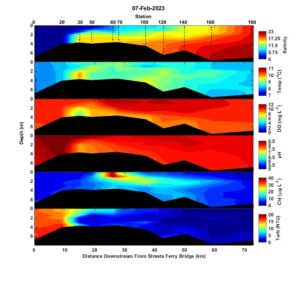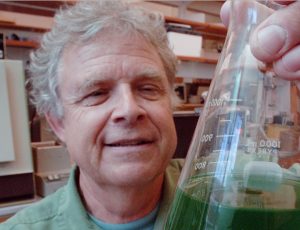Hi all,
The Neuse River basin had several significant rainfall events prior to the 7 February sampling event and salinity in the upper estuary responded strongly. Surface salinity was < 5 downstream to station 60 and the tip of the salt wedge was between stations 20 and 30. Salinity in the lower estuary dropped about 5 units since January also. The freshwater pulse also caused high turbidity (>10 NTU) at the head of the estuary. Temperature was seasonably cool (8-10 C). Dissolved oxygen was well above levels required for the health of fish and other animals. However, the bottom water dissolved oxygen at station 30 was atypically low (~ 5 mg/L) for this time of year. Strong suppression of mixing caused by the > 10 salinity difference from the surface to bottom layer led to the oxygen sag even though respiration rates were surely very slow in at such cold water temperatures. A localized surface bloom at station 60 was caused primarily by very high densities of a Euglena sp. and secondarily by the dinoflagellate, Prorocentrum minimum. Neither have been linked to fish kills or other toxicity issues in North Carolina.
-Nathan

